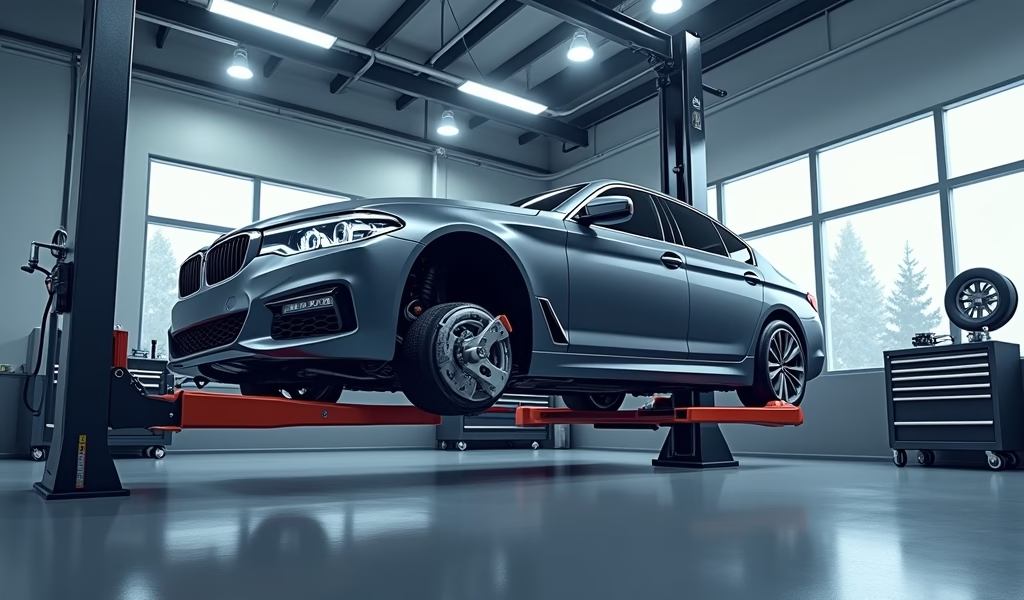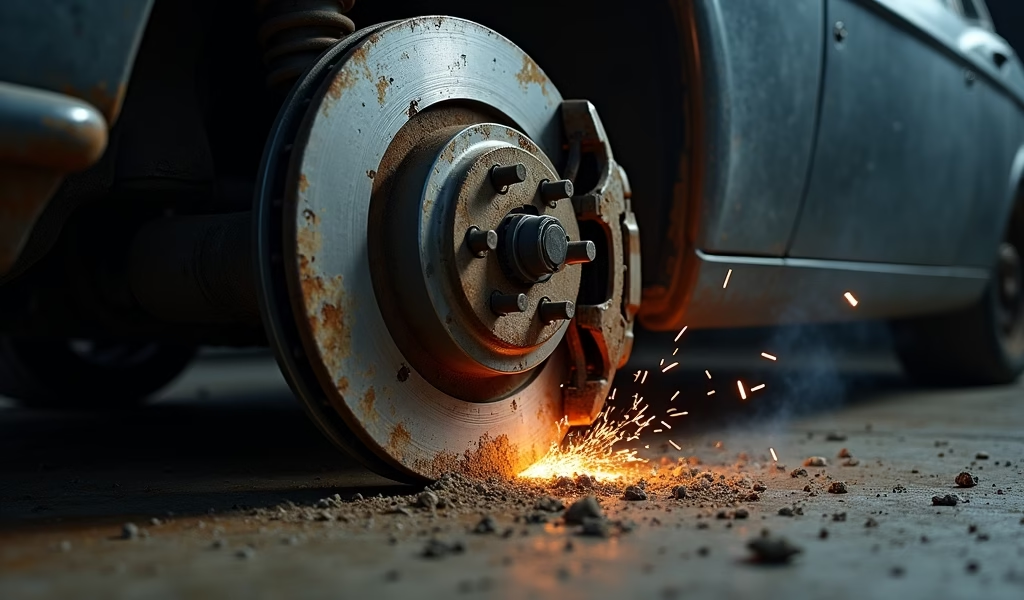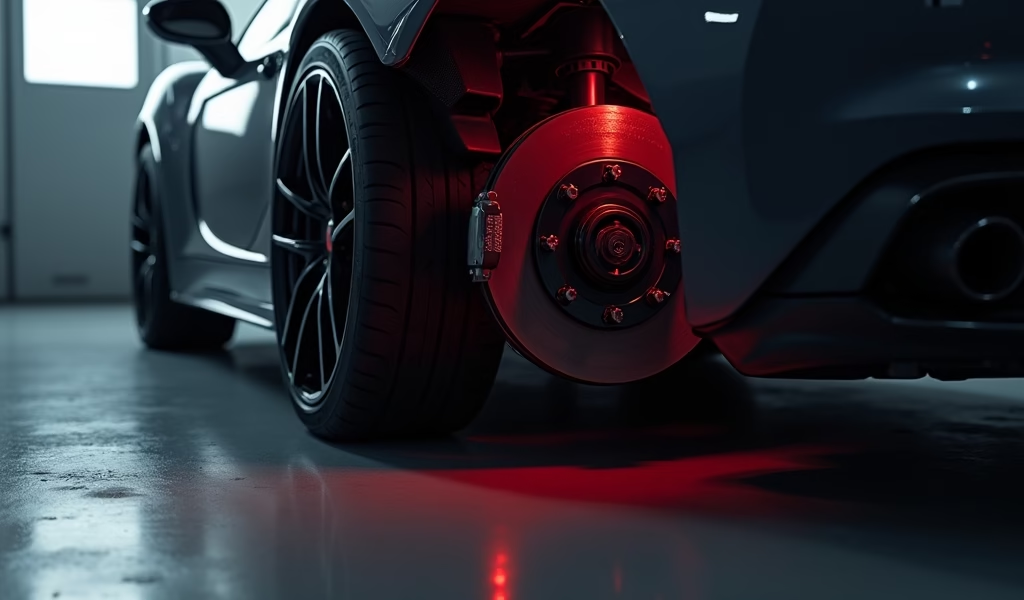Overview
This article provides an extensive guide to brake repair costs, covering everything from system basics and warning signs to price breakdowns ($100-800 per axle depending on services needed) and maintenance tips that extend brake life. The author, a master technician with 20 years of experience, emphasizes that while brake repairs represent a significant expense ($500-1,200 annually for average drivers), they should be viewed as essential safety investments rather than optional maintenance.
Table of Contents
- Understanding Brake Systems: The Basics You Should Know
- Identifying Brake Problems: Warning Signs You Shouldn’t Ignore
- Brake Repair Cost Breakdown: What You’ll Actually Pay
- DIY vs. Professional: When to Save and When to Spend
- Getting the Best Value: Smart Shopping for Brake Services
- Preventative Maintenance: Extending Your Brake Life
- Financing Options and Warranties: Managing Repair Costs
- Conclusion: Investing in Safety and Savings
- Frequently Asked Questions
That alarming screech when you hit the brakes at a red light. The unsettling feeling of a brake pedal that sinks too easily. These aren’t just annoying quirks – they’re your vehicle’s way of sending an urgent safety alert. As a master technician with 20 years under my belt, I’ve seen how postponing brake repairs can turn minor issues into major headaches (and expenses).
Understanding brake repair costs doesn’t have to feel like deciphering a foreign language. This guide breaks down what you’ll pay, when to pay it, and how to keep those costs manageable without compromising your safety.
Understanding Brake Systems: The Basics You Should Know
Before we talk dollars and cents, let’s get familiar with what you’re actually paying to fix. Your braking system is essentially a conversion machine – it transforms your vehicle’s kinetic energy (motion) into thermal energy (heat) through friction.
The main components include:
- Brake pads – The friction material that presses against rotors
- Rotors (or discs) – Metal surfaces that the pads grip
- Calipers – The “clamps” that push pads against rotors
- Brake fluid – Hydraulic fluid that transfers force from your foot
- Master cylinder – The component that pressurizes brake fluid
- Brake lines – Pathways carrying pressurized fluid to each wheel
When you press your brake pedal, you’re starting a chain reaction: foot pressure → master cylinder → brake fluid → calipers → pads → rotors → friction → stopping power. Pretty impressive for something we take for granted during our daily commute!
Identifying Brake Problems: Warning Signs You Shouldn’t Ignore

Your brakes are surprisingly communicative when they need attention. As a mechanic who’s diagnosed thousands of brake issues, I’ve learned they almost always give clear warnings before failing completely.
Listen for these common complaints from your braking system:
- Squealing or screeching: That high-pitched noise is usually the wear indicator – a small metal tab designed to make noise when your pads are getting thin. Think of it as your car’s way of saying, “Feed me new brake pads, please!”
- Grinding noises: This metal-on-metal sound means you’ve worn completely through your brake pads. At this point, metal backing plates are digging into your rotors – an expensive problem that needs immediate attention.
- Pulsating brake pedal: That vibration under your foot typically indicates warped rotors. Heat buildup and uneven wear can distort these normally flat surfaces.
- Soft or spongy pedal: When your foot sinks too easily, you might have air in the lines, a fluid leak, or master cylinder issues. This requires prompt attention as it compromises stopping power.
- Vehicle pulling: If your car seems magnetically attracted to one side during braking, a stuck caliper or uneven pad wear is often the culprit.
Addressing these symptoms early isn’t just about avoiding that nerve-wracking moment when brakes fail – it’s also about protecting your wallet. Small problems have a frustrating tendency to snowball into costly repairs when ignored.
Brake Repair Cost Breakdown: What You’ll Actually Pay
Let’s talk real numbers. As a mechanic who’s written thousands of repair estimates, I can tell you brake service costs vary widely based on your vehicle, parts quality, and shop location. Here’s what you can expect:
- Brake Pad Replacement: $100-$300 per axle (front or rear)
- Rotor Resurfacing: $50-$100 per rotor (when possible)
- Rotor Replacement: $150-$400 per axle
- Caliper Replacement: $250-$450 per caliper
- Complete Brake Job: $300-$800 per axle (pads, rotors, hardware)
- Master Cylinder Replacement: $350-$500
- Brake Line Replacement: $150-$300 per line
Several factors can nudge these prices up or down:
- Vehicle type: That luxury or performance badge often comes with a premium parts cost. A basic brake job on a Honda Civic costs significantly less than the same service on a BMW 5-Series.
- Parts quality: From budget-friendly to premium ceramic, brake pad and rotor replacement costs can vary by $100+ per axle based on materials alone.
- Shop location: Labor rates reflect local economies – expect to pay more in San Francisco than in rural Kansas.
- Shop type: Dealerships typically charge 20-30% more than independent shops for the same work.
According to AAA research, the average driver spends between $500-$1,200 on brake repairs annually, depending on driving habits and vehicle type. This isn’t pocket change, but it’s significantly less than the potential costs of accidents caused by brake failure.
DIY vs. Professional: When to Save and When to Spend
As someone who started fixing brakes in my driveway before making it my profession, I understand the appeal of DIY brake work. Some jobs are certainly within reach of a mechanically-inclined person with basic tools.
Projects suitable for home mechanics include:
- Brake pad replacement (most vehicles)
- Basic brake inspections
- Fluid level checks and top-offs
You’ll need some essential tools:
- Jack and jack stands (never rely solely on a jack!)
- Lug wrench and socket set
- C-clamp or caliper compression tool
- Brake cleaner spray
- Reliable repair manual or video guide
However, some brake repairs should remain in professional hands:
- Brake line replacements (requires specialized flaring tools)
- Master cylinder work (requires comprehensive system bleeding)
- ABS system repairs (needs specialized diagnostic equipment)
- Repairs on vehicles with electronic parking brakes
Even when DIYing, never compromise on parts quality. The $20 saved on bargain brake pads isn’t worth the potential risk. As Consumer Reports notes, quality braking components directly impact stopping distance – a critical factor in emergency situations.
Getting the Best Value: Smart Shopping for Brake Services

Finding the sweet spot between quality and affordability requires some homework. As someone who’s managed repair shops, I can tell you there are significant price variations even among reputable mechanics.
Start by researching fair pricing:
- Use online estimator tools from RepairPal or NAPA
- Request quotes from 3-4 shops for comparison
- Check local automotive forums for regional pricing insights
When evaluating repair shops, look for:
- ASE (Automotive Service Excellence) certified technicians
- Positive reviews across multiple platforms
- Clear, detailed estimates before work begins
- Shops specializing in your vehicle make
Ask these questions when getting quotes:
- “What quality of parts do you use?” (OEM, premium aftermarket, economy)
- “What’s included in this price?” (Parts, labor, fluid, hardware)
- “What warranty comes with this work?”
- “Can I see the old parts after replacement?”
Don’t be afraid to negotiate, especially if you’ve done your homework. Many shops will match competitors’ written estimates or offer discounts during slower seasons. Remember – the cheapest quote isn’t always the best value if it means inferior parts or rushed workmanship.
Preventative Maintenance: Extending Your Brake Life
The most affordable brake repair is the one you never need. After working on thousands of vehicles, I can confidently say that maintenance habits dramatically impact how often you’ll visit the brake shop.
Follow this simple inspection schedule:
- Visual check of brake pad thickness every 10,000 miles
- Professional brake inspection during every other oil change
- Brake fluid replacement every 2 years (moisture contamination reduces effectiveness)
Adopt these driving habits to extend brake life:
- Avoid “riding” the brakes, especially downhill
- Practice smooth driving instead of rapid acceleration and hard braking
- Remove unnecessary weight from your vehicle
- When safe, coast to slow down before applying brakes
Regular maintenance pays off – vehicles with consistent brake service typically need major repairs half as often as neglected vehicles, according to data from the National Highway Traffic Safety Administration.
Financing Options and Warranties: Managing Repair Costs
Even with proper planning, substantial brake repairs can create budget challenges. Fortunately, you have options beyond paying everything upfront.
Check these potential warranty coverages:
- New vehicle warranty (typically 3 years/36,000 miles)
- Certified pre-owned coverage
- Extended warranty plans
- Parts manufacturer warranties (often 12-24 months)
When warranty doesn’t apply, consider these payment options:
- Shop financing programs (many partner with Synchrony Car Care or Care Credit)
- In-house payment plans from national repair chains
- Auto parts retailer financing for DIY repairs
- Credit cards with 0% APR promotional offers
Remember – postponing necessary brake work due to budget constraints often leads to more expensive damage. A $300 brake pad replacement today could prevent a $700 rotor and caliper replacement next month. Most repair shops would rather work out a payment plan than see you drive away with unsafe brakes.
Conclusion: Investing in Safety and Savings
Your vehicle’s braking system isn’t just another maintenance item – it’s your primary safety system, deserving both attention and appropriate investment. The difference between premium and economy brake components might be mere seconds in stopping distance – but those seconds can literally separate a safe stop from a collision.
By understanding the components, recognizing early warning signs, and practicing preventative maintenance, you can manage brake repair costs while ensuring your safety on the road. Remember that proper brake function isn’t an area to cut corners.
When that brake pedal feels soft or you hear that tell-tale squeal, don’t think of it as just another expense. Think of it as your vehicle’s way of reminding you that some maintenance simply can’t wait. Your future self – and everyone sharing the road with you – will thank you for prioritizing this critical safety system.
Frequently Asked Questions
How often should brake pads be replaced?
Most brake pads need replacement every 30,000 to 70,000 miles depending on driving habits and vehicle type. City drivers typically need more frequent replacements than highway drivers due to the increased frequency of braking.
What’s the difference between economy and premium brake pads?
Premium brake pads generally use higher quality materials that provide better stopping power, produce less dust, and last longer than economy options. The price difference is typically $30-$60 per axle, but premium pads often deliver better value through extended lifespan and performance.
Can I replace just the brake pads without replacing rotors?
Yes, but only if the rotors are within specification for thickness and have no significant scoring or warping. A mechanic can measure rotor thickness and surface condition to determine if they can be reused safely.
Why do rear brakes sometimes cost more than front brakes?
Rear brakes often incorporate parking brake mechanisms that make the job more complex and time-consuming. Additionally, some vehicles use different systems for rear brakes (like drum brakes) that require additional labor steps compared to front disc brakes.
Is it normal for brake repair costs to vary so widely between shops?
Yes, variations of 30-40% between quotes is common due to differences in parts quality, labor rates, and shop overhead. Always compare itemized estimates to ensure you’re comparing equivalent services and parts.

